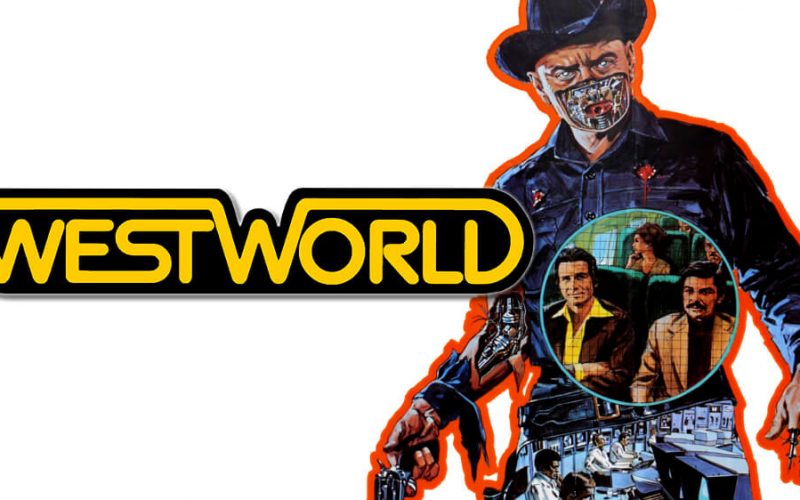Westworld (1973) – The cult classic prequel to the hit HBO show.
*** Contains spoilers for both the 1973 film & Season One of the HBO series. ***

In the film adaptation of acclaimed science fiction author Michael Crichton’s Jurassic Park, Jeff Goldblum’s character Ian Malcolm warns the park’s creator John Hammond that when the Pirates of the Caribbean ride breaks down, the pirates don’t eat the people. This warning is very apt as it was the aforementioned Disneyland ride that inspired Crichton to both write and direct his first feature film, the 1973 cult classic, Westworld. Yes, HBO’s hit series, that’s already being hailed as the next Game of Thrones, has its origins in a low budget 70’s sci-fi film. But more on that later. Westworld the film, like the new TV show, is centred around a huge, adult themed amusement park called Delos whose life-like robotic attractions are almost indistinguishable from the human guests who pay $1,000 a day to live out their fantasies in the authentic Old West setting of Western World. If being a cowboy/girl isn’t your thing there’s also Roman World and Medieval World all within the sprawling Delos resort.
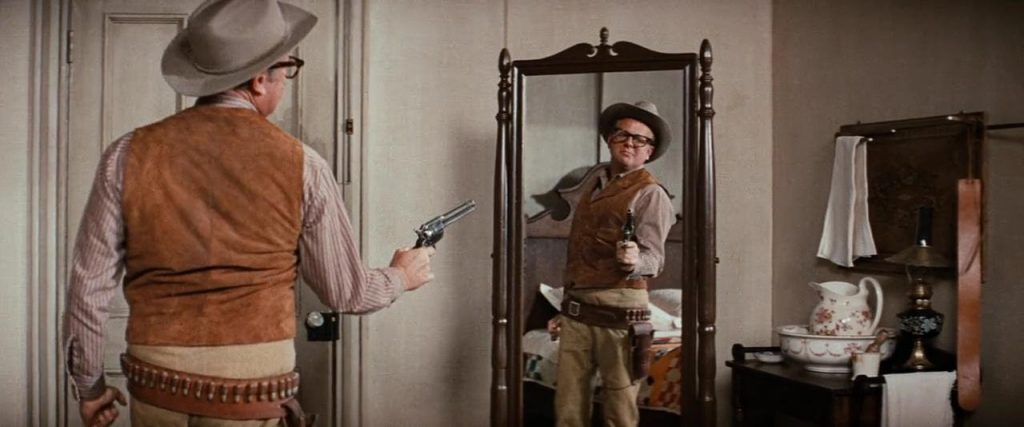
Our protagonists on this adventure are John Blane and Peter Martin, vacationing friends and businessmen played by James Brolin (father of Josh) and Richard Benjamin. They choose Western World as their vacation of choice, John having visited the resort before and the uptight and recently divorced Peter being a first timer. The park attractions are programmed to be as authentic as the settings in which they operate. People, horses, dogs, snakes, all robots and all maintained by a 24 hour a day behind the scenes technical crew who come out at night to collect the “dead” townsfolk and animals, victims of the guest’s violent role playing. They’re repaired whilst the guests sleep and are put back into the resort once reactivated.
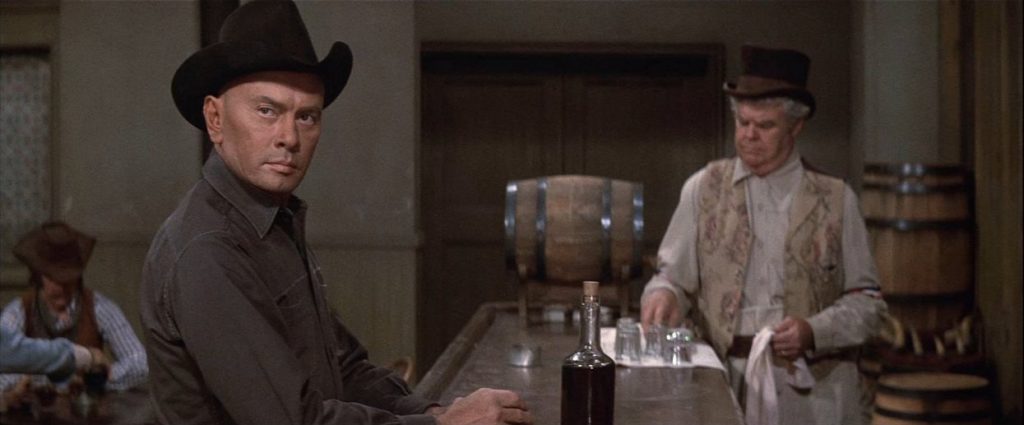
Our pair of guests get drunk, have sex with robotic prostitutes, get into gunfights, bar fights and more gunfights with the black clad “Gunslinger”. Westworld is in many ways an early dry run for Crichton’s later Jurassic Park and bears many similarities to its Dino-successor. The park’s attractions start to glitch and the head technician identifies what he describes as a programming disease, what modern audiences would know as a computer virus. There are many prescient ideas in Westworld as well as some very hokey technological aspects that have aged the film rather badly in places. It’s the idea behind the film and the lean efficiency of it’s narrative execution that stands out. Westworld takes its time to set the scene before things really start to go wrong for John and Peter but when they do go wrong the tone of the film veers sharply from almost light and comedic to brutal and intense.

Brolin and Benjamin are perfectly cast and the dichotomy of their opposing confident and weaker characters form part of Westworld’s biggest rug pull at the point they meet The Gunslinger for a third time. It’s this third character, played by late screen legend Yul Brynner, who is the film’s main draw and arguably it’s most memorable aspect. Brynner is like a lean forebear to Arnold Schwarzenegger’s Terminator, terrifying, unstoppable and unrelenting in his pursuit of his quarry. Intentionally clad in the same all black outfit as his earlier iconic character, Chris Adams, from 1960’s The Magnificent Seven, this gunslinger is like a dark facsimile of the earlier, wholesome Chris. Brynner’s delivery is cold, harsh and devoid of any humanity making him all the more terrifying. His performance is loaded with odd little quirks that add to the inhumanity of the Gunslinger all augmented by the simple addition of silver contact lenses. It’s an outstanding performance that maximises his relatively brief amount of screen time.
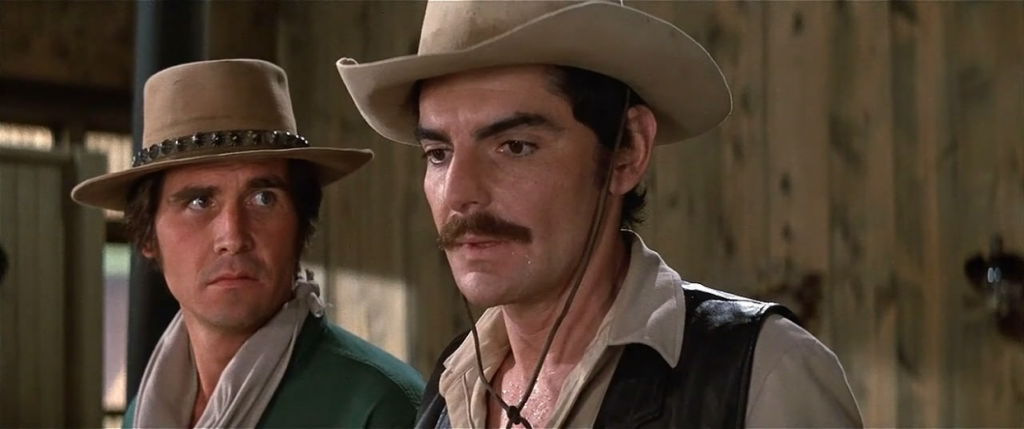
The shift in tone that leads to the nail biting cat and mouse third act is at once jarring and brutal and from here on in the violence quotient is upped considerably. This third act, stripped of the light and fluffy tone of the rest of the film is hard to fault. The stunning cinematography of the Mojave Desert and Red Rock Canyon State Park giving the film a suitably large scope that belies it’s meagre budget.

Where Westworld’s flaws lie are in its earlier scenes where we see the innards of the robots and the technology behind the illusion. It’s a mash of circuitry and wires and no actual armatures or mechanisms that could conceivably move these things like real humans and animals. Compare this to the anatomically correct internal workings of Stan Winston’s Terminator and they do seem a little quaint as does much of the technological side of things in Westworld, likely a constraint imposed by the film’s budget. That said this was 1973 and you can’t be too harsh on a film made in a time where computers and robotics were very much in their infancy. In fact Westworld is credited as showcasing the first ever use of computer digitised images in the form of the Gunslinger’s POV.

Westworld was made on a tight budget of around $1.25 million and remains very much a cult classic of the 1970’s. It has three solid central performances with Brynner’s performance as The Gunslinger approaching iconic status. The first half of the film is pretty much just lighthearted scene setting but when it eventually kicks into high gear it becomes an effectively taught thriller that pulls no punches with its audience as it races towards an almost bleakly cold ending, a warning of the dangers of man’s attempts to create artificial intelligence. Throughout the film the robotic characters are imbued with an element of eerie soullessness that adds immeasurably to the illusion of artificiality that Crichton is clearly aiming to convey. A sequel was made in the form of 1976’s Futureworld. It features a woefully brief and contrived cameo by Brynner (in sadly his final film appearance) and is in short a forgettable film that has little to do with the original.
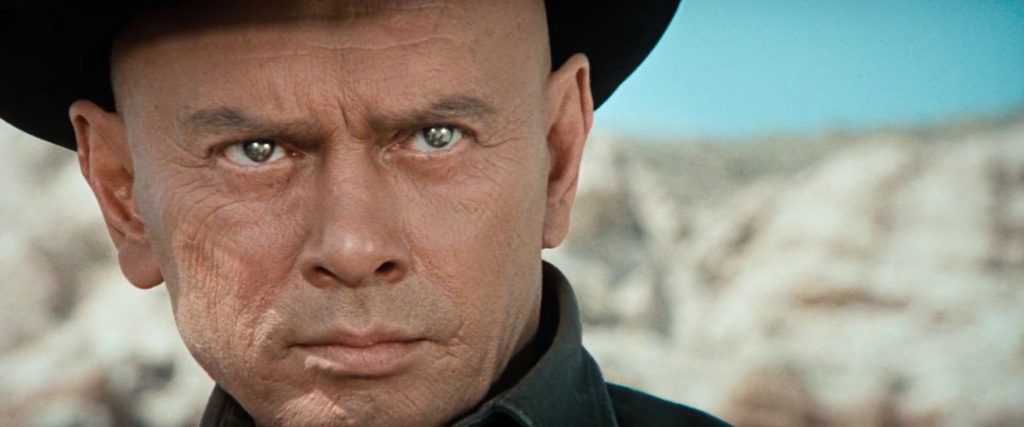
The new HBO series is now in between its first and second seasons. The first season has proven to be a great success and instead of being a remake, on closer inspection is actually a direct continuation, a sequel if you will to the 1973 original. When we are taken into the sub-levels of the new version of the park we see structures that are eerily similar to the Delos of the film. We see a giant metal globe adorning a disused underground lobby with Delos emblazoned across it suggesting that this new park is in fact built on the ruins of the old one. At one point the head technician states that a major and life threatening malfunction hasn’t occurred in Westworld for over 30 years and later in the first season, eagle-eyed viewers will catch a glimpse of an artificial human in storage beneath the modern incarnation of the park who looks identical to Brynner’s Gunslinger. When you consider that the original film was set in the then future of 1983 suddenly things start to add up and the original film is given a new lease of life and relevance in the form of the new series.
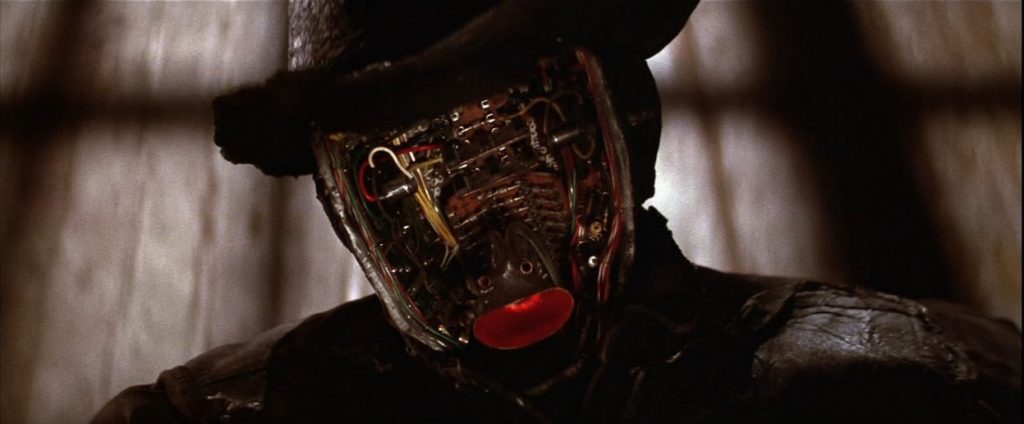
The merits of this new series are abundantly clear after an opening season that, whilst at times unnecessarily complex in the way the plot unfolded, must be applauded for both it’s fresh take on the source material as well as its adherence to the world established in the original film which will no doubt please fans of the original and gives the film a renewed relevance. If you’re a fan of the new series and haven’t seen the original movie then I strongly urge you to seek it out as it will certainly enrich your enjoyment of the show. Taken on its own merits, the film’s slightly slower paced and at times rather hokey first half may reduce its rewatchability factor somewhat. When it does shift into high gear it quickly evolves into a taught and memorable slice of cult ’70s sci-fi that achieves far more than it’s meagre budget should reasonably allow. This is a credit to Crichton on his directorial debut and to the performances of Brolin, Benjamin and especially Yul Brynner in one of his last and most memorable screen appearances.
Film ’89 Verdict – 7/10

